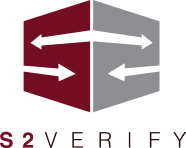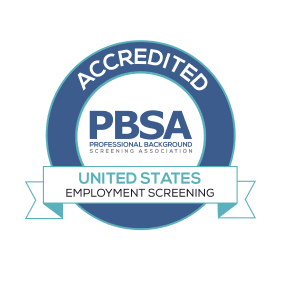Combatting Employee Fatigue with Slow Productivity
A growing number of organizations are beginning to recognize the importance of sustainable work practices that promote long-term productivity without sacrificing employee well-being.
The slow work movement—a concept that challenges the culture of perpetual urgency—offers an alternative path, advocating for a more balanced, intentional approach to work.
By integrating slow productivity into hiring strategies, remote work flexibility, and a supportive workplace culture, employers can address employee fatigue while enhancing overall performance.
Understanding the Costs of Fatigue and the Need for Slow Productivity
Employee fatigue is more than just a personal challenge; it carries significant organizational consequences. Chronic exhaustion can lead to decreased productivity, higher absenteeism, and increased turnover rates. Studies have shown that fatigued employees are more prone to errors, which can compromise workplace safety and efficiency. In industries with high cognitive or physical demands, fatigue-related errors can have severe ramifications, making it a critical issue for HR professionals and hiring managers to address.
Traditional workplace structures often prioritize output over sustainability, encouraging long hours and a “grind” mentality that ultimately reduces efficiency. Forward-thinking organizations are re-evaluating this approach by considering how hiring and work practices contribute to long-term employee well-being. Slow productivity offers a solution by emphasizing deliberate, high-quality work over frantic multitasking.
Sustainable Hiring: Prioritizing the Right Fit for Slow Productivity
The hiring process plays a crucial role in fostering a sustainable work environment. When organizations focus solely on filling roles quickly, they risk onboarding employees who may not align with the company’s culture or long-term objectives. This can lead to disengagement and higher turnover, perpetuating a cycle of continuous hiring and onboarding that further strains existing staff.
To combat this, companies should adopt hiring strategies that emphasize alignment between candidates and the organization’s values, workload expectations, and flexibility policies.
Hiring managers should:
- Assess candidates for their ability to work within slow productivity expectations rather than merely their willingness to “go the extra mile.”
- Clearly define job responsibilities to prevent scope creep and burnout.
- Evaluate cultural fit, particularly in terms of collaboration, flexibility, and work-life balance expectations.
- Use data-driven insights from past hiring trends to determine whether workload distribution supports long-term employee retention.
By ensuring new hires are set up for sustainable success from the start, organizations can prevent many of the issues that contribute to burnout down the line.
Embracing Remote and Hybrid Work to Support Slow Productivity
One of the most effective ways to combat employee fatigue is by rethinking traditional workplace structures. Remote and hybrid work models provide employees with greater control over their schedules, allowing for better work-life balance and reduced stress from commuting. Slow productivity thrives in environments where employees have the flexibility to manage their energy and focus on deep work rather than constant interruptions.
However, remote work alone is not a silver bullet. Companies must implement policies that prevent remote work from becoming an “always-on” culture, where employees feel pressured to be available at all hours.
Strategies to make remote work sustainable include:
- Setting clear expectations for working hours and encouraging employees to disconnect after their shifts.
- Providing resources for home office ergonomics and wellness programs to prevent physical strain.
- Encouraging asynchronous communication to reduce the expectation of immediate responses.
- Implementing regular check-ins to assess workload and employee well-being without micromanaging.
When done right, remote and hybrid work can serve as a powerful tool for reducing fatigue and increasing job satisfaction through slow productivity.
Cultivating a Workplace Culture That Supports Slow Productivity
Sustainable work practices extend beyond policies—they require a cultural shift that values long-term well-being over short-term gains. Leaders and HR professionals play a crucial role in fostering this mindset by modeling and encouraging behaviors that prevent burnout.
A culture that prioritizes slow productivity should focus on:
- Encouraging Restorative Breaks: Employees should feel empowered to take regular breaks without fear of judgment. Research has consistently shown that short breaks enhance productivity rather than diminish it.
- Recognizing and Rewarding Sustainable Performance: Rather than celebrating overwork and late nights, organizations should reward efficiency, collaboration, and thoughtful decision-making.
- Providing Mental Health Resources: Access to counseling, stress management workshops, and peer support groups can help employees navigate workplace pressures more effectively.
- Reducing Unnecessary Meetings: A meeting-heavy culture contributes to fatigue by fragmenting employees’ time and reducing their ability to focus on deep work. Organizations should encourage mindful meeting practices, such as setting clear agendas and allowing for meeting-free focus periods.
Measuring Success: The Long-Term Benefits of Slow Productivity
For HR managers and talent professionals, tracking the effectiveness of slow productivity and sustainable work practices is essential to maintaining momentum.
Success indicators include:
- Lower Turnover Rates: A reduction in voluntary departures suggests that employees feel more supported and engaged.
- Higher Productivity Metrics: Sustainable work environments often lead to improved efficiency as employees experience fewer burnout-related slowdowns.
- Employee Satisfaction Scores: Regular pulse surveys can provide insights into how well the company’s work policies align with employee well-being.
- Reduced Absenteeism: Employees who feel rested and valued are less likely to take unplanned leave due to exhaustion or stress.
By analyzing these metrics, organizations can continuously refine their approach to ensure their work environment remains supportive and sustainable.
The Path Forward: Shaping the Future of Work with Slow Productivity
Slow productivity is not a fleeting trend—it represents the future of smart, human-centric business operations. Organizations that embrace these principles will be better equipped to attract and retain top talent, maintain high levels of engagement, and achieve long-term success.
By integrating mindful hiring strategies, flexible work options, and a culture that prioritizes well-being, companies can create an environment where employees not only perform well but also thrive for years to come.







